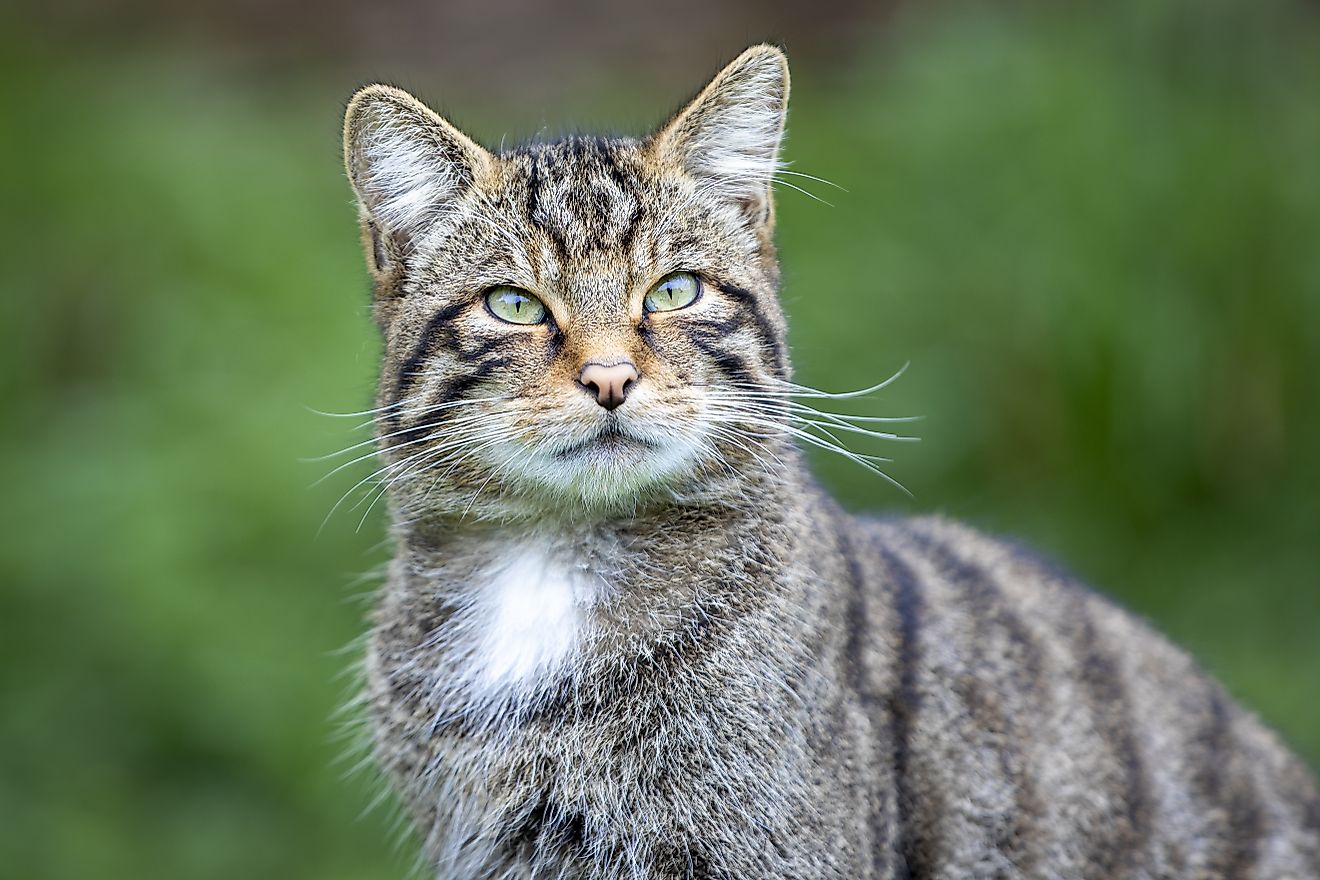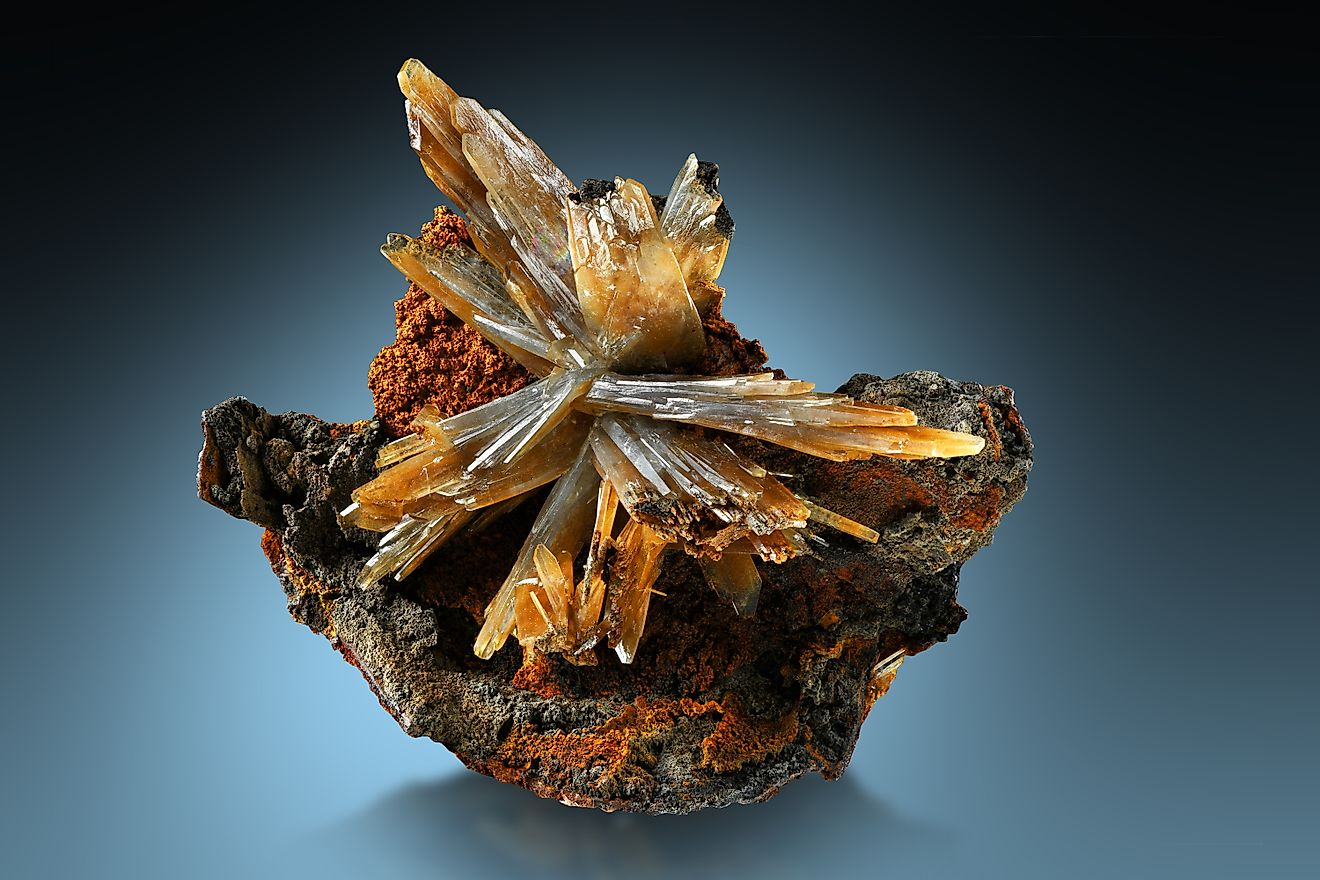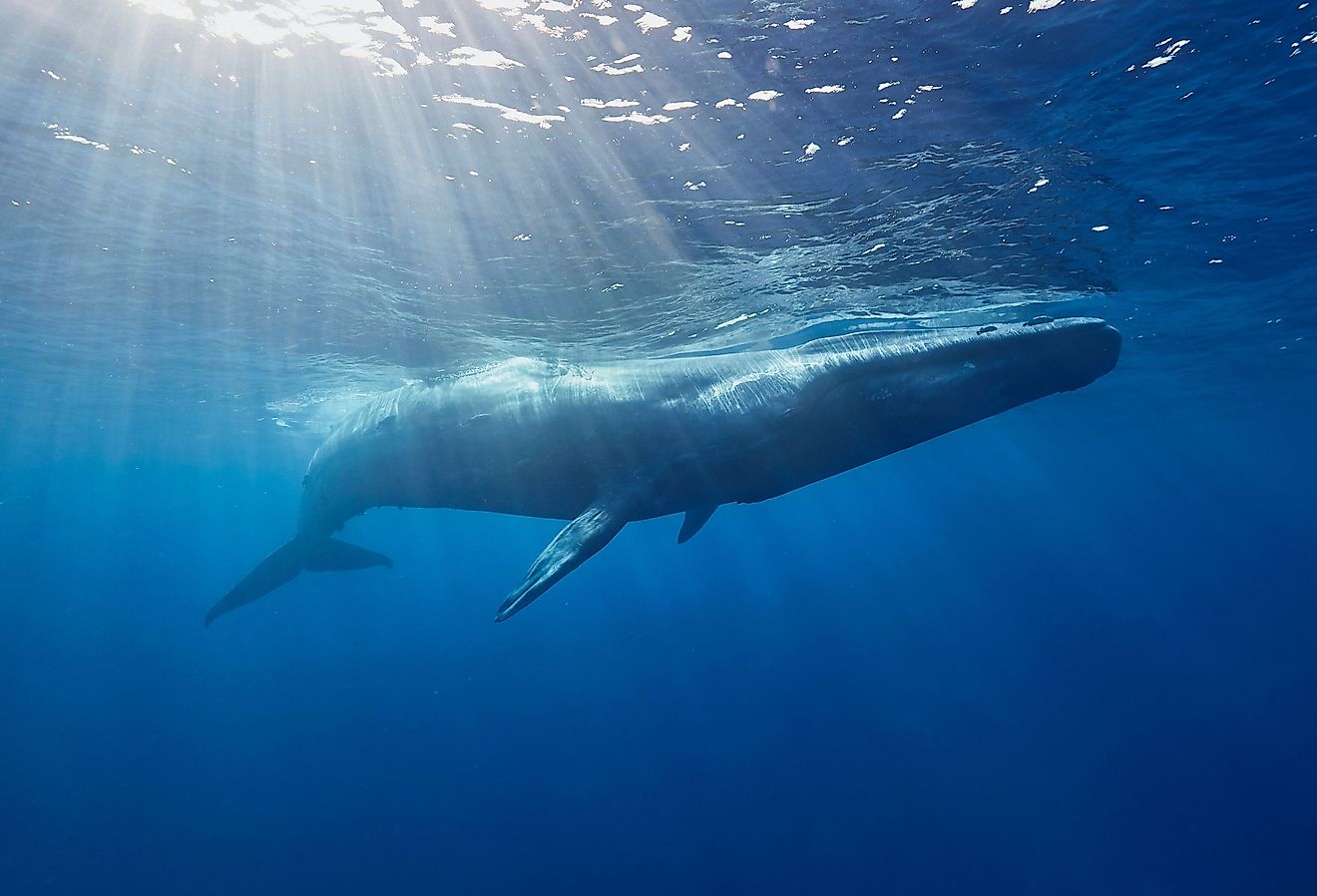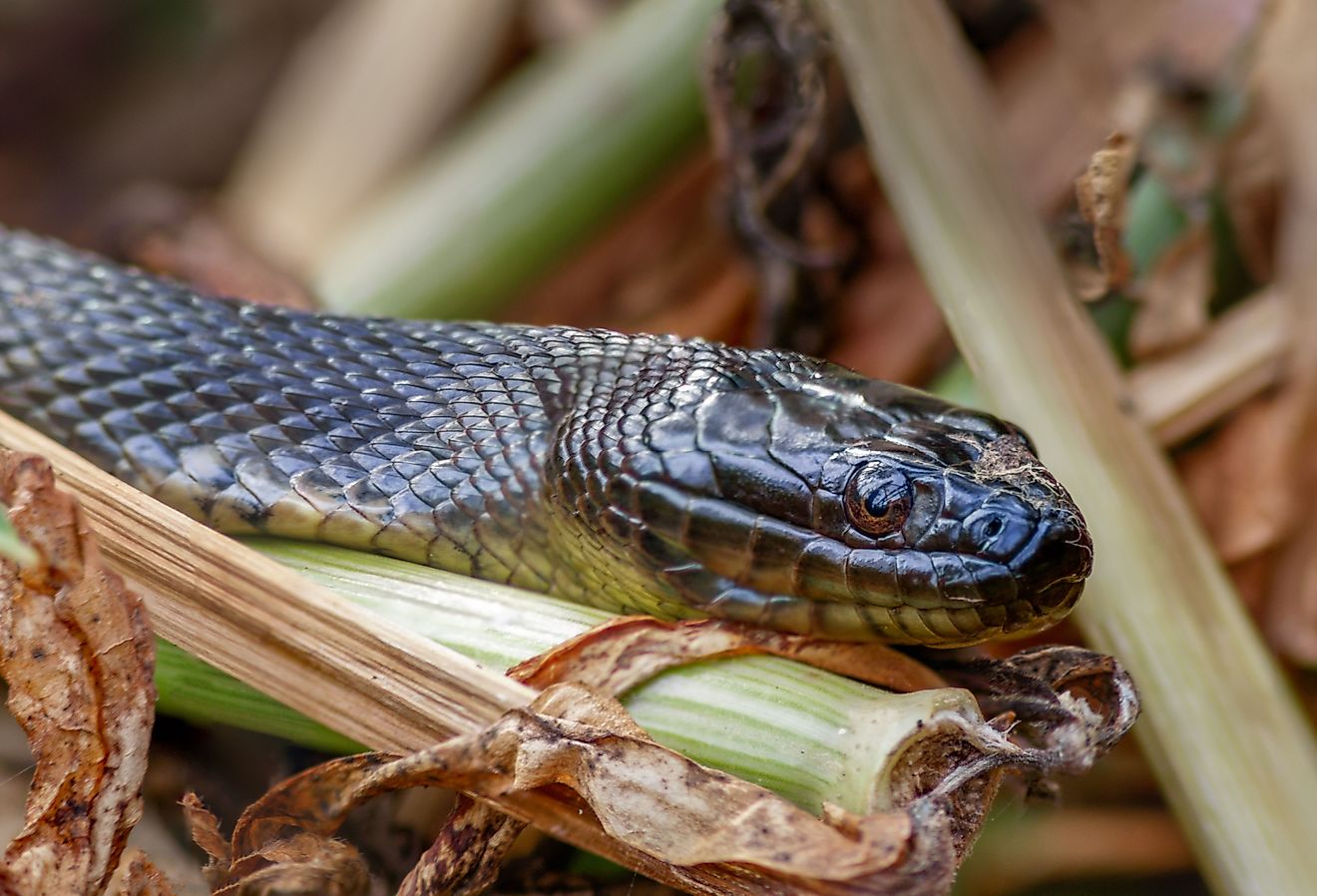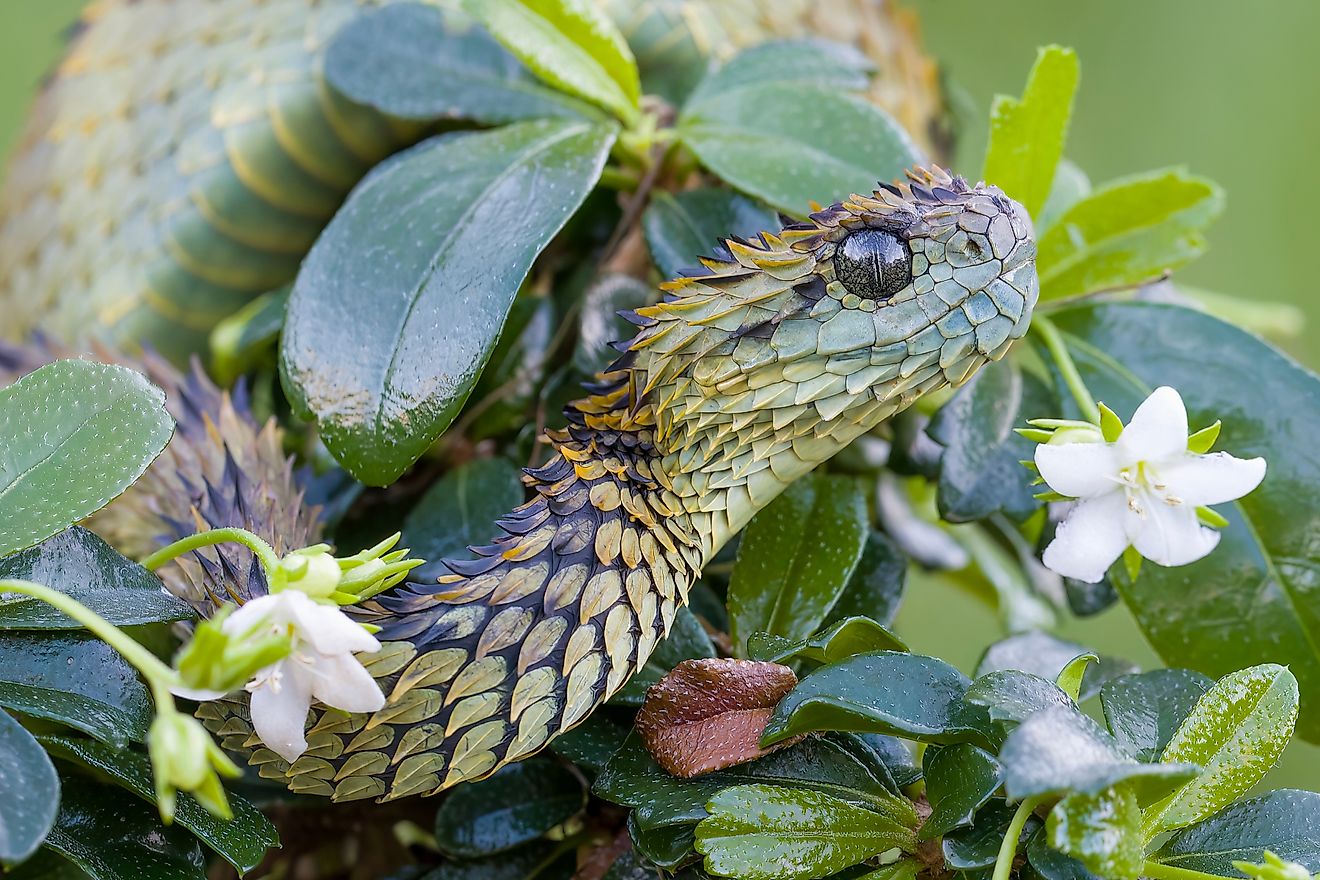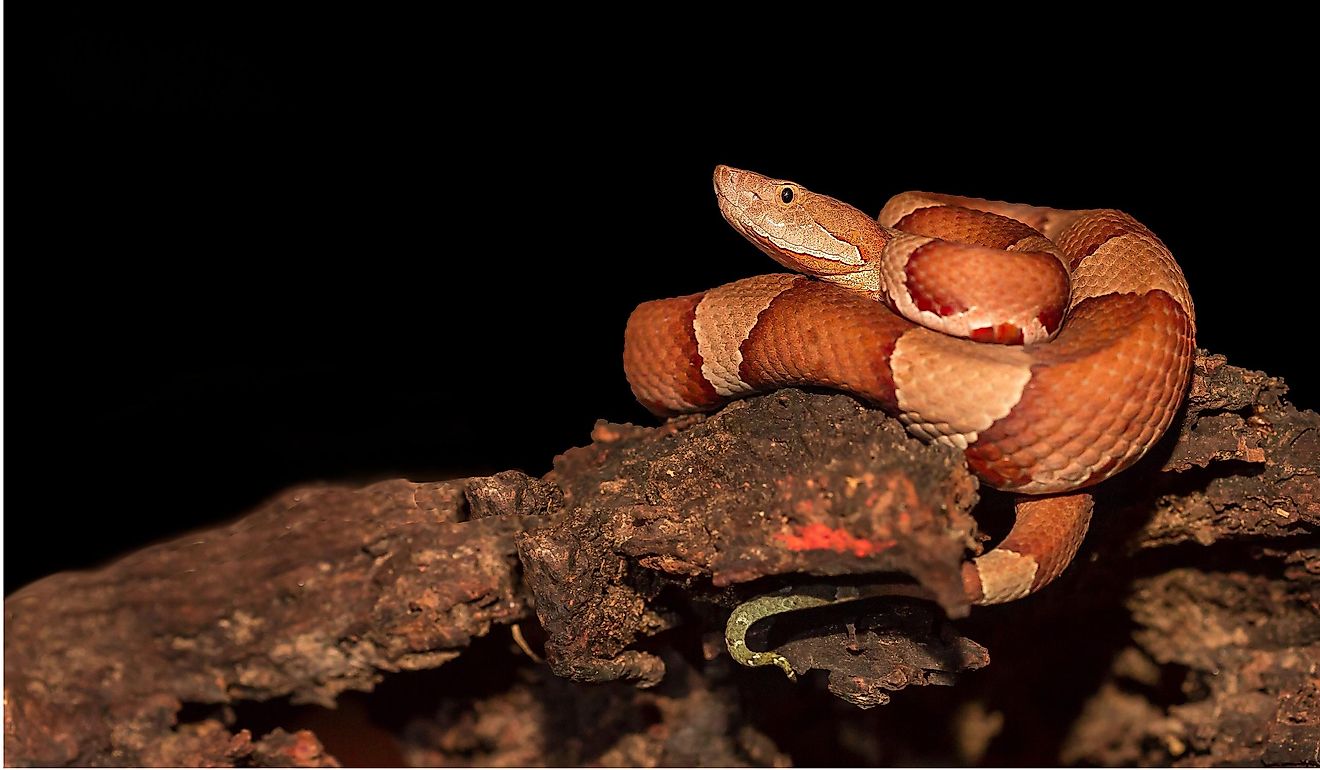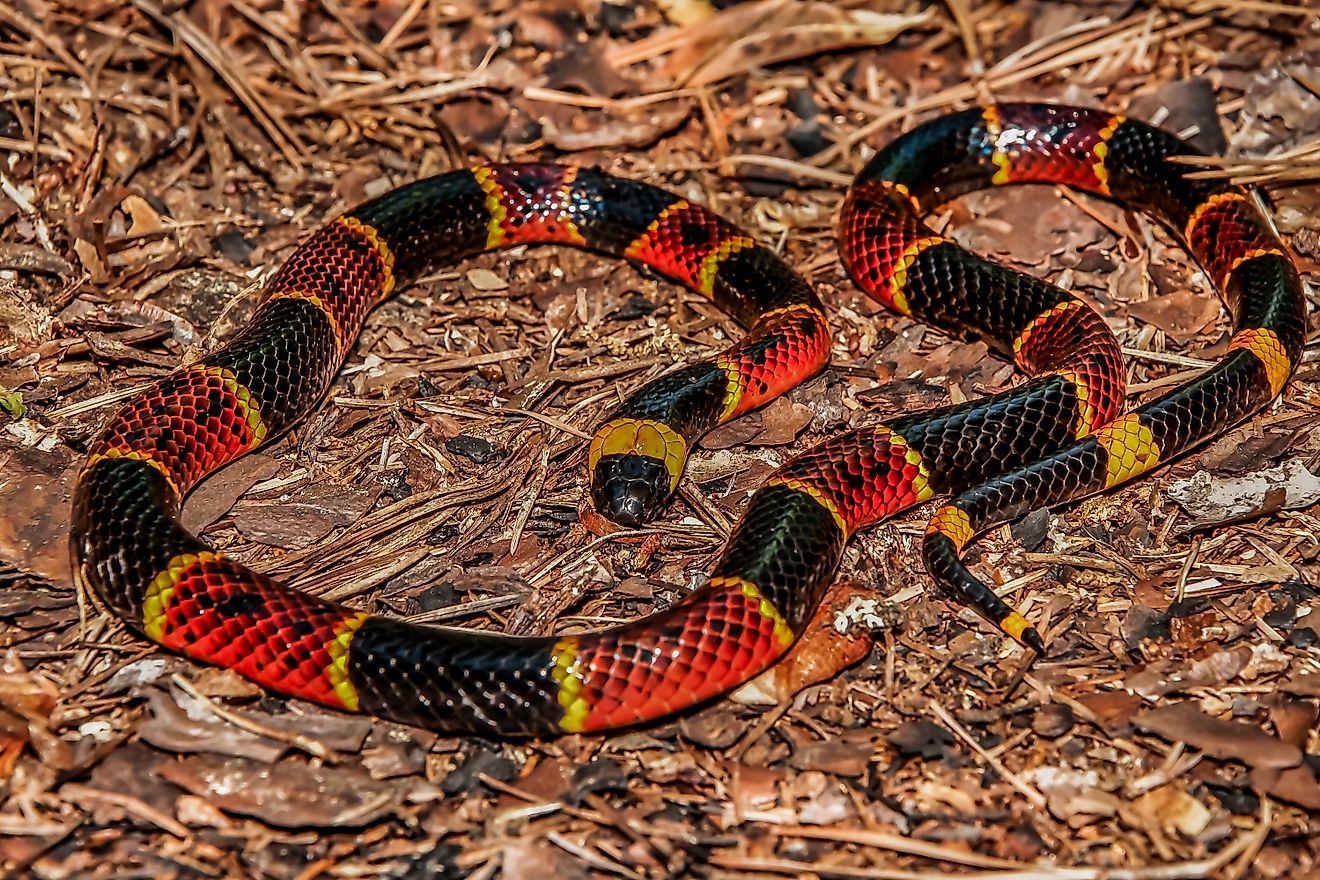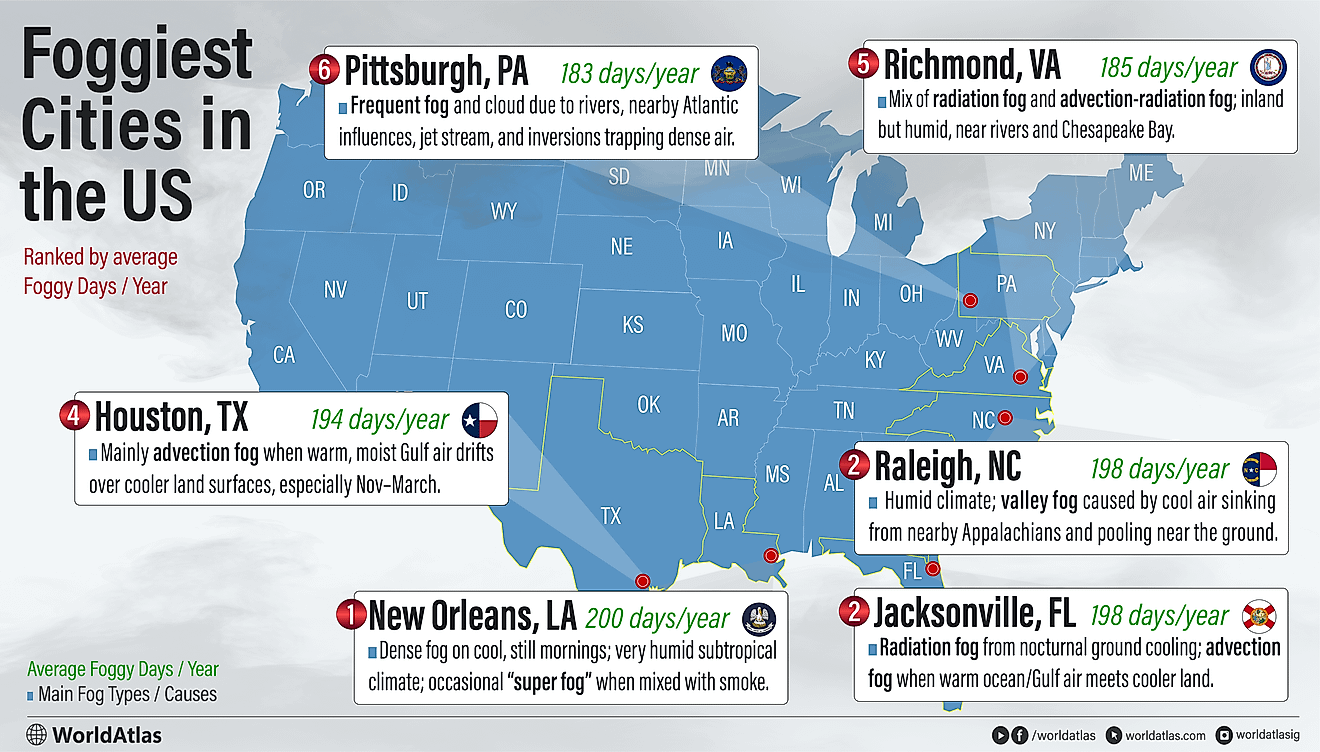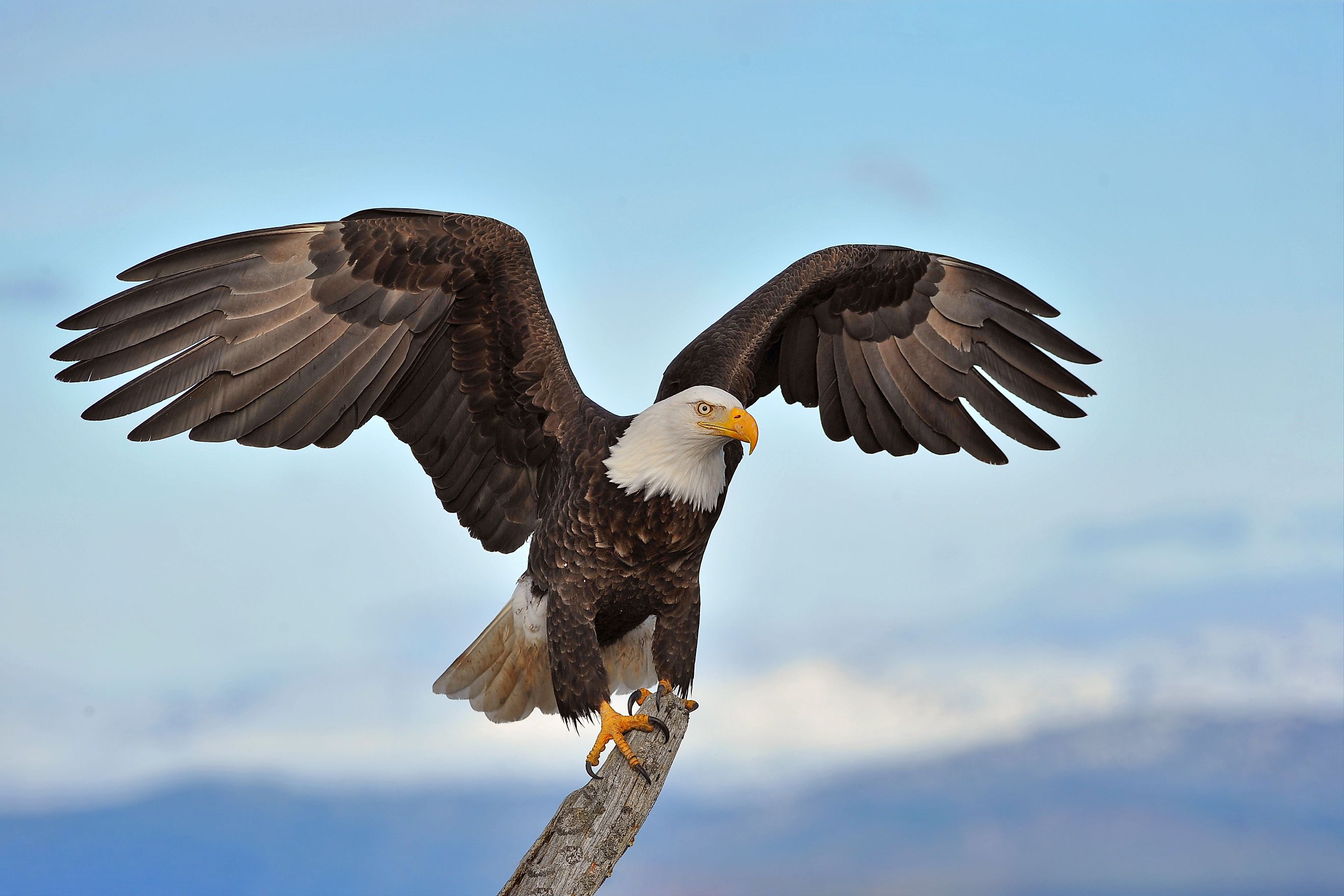
New York’s Hudson Valley Survivor: The Bald Eagle
The state of New York is blessed with some of nature’s finest creatures, from skilled hunters like coyotes that can explore up to 10 miles of open space in a day, to tiny mammals like chipmunks with cheeks always stuffed with seeds, among others. However, one creature often watches over them all, from the comfort of the skies and tall trees with eyes four to eight times stronger than human eyes, and wings spanning between six and seven feet. Generally known as “the eagle,” this raptor stands out for its white head, which is a sign of maturity, alongside a white tail and yellow beak. The word “white-headed” was once synonymous with “bald,” hence the name.
For hundreds of thousands of years, the bald eagle has dominated the skies of New York’s Hudson Valley and other parts of North America, preying on crawling, walking, flying, and swimming creatures. In some Native American cultures, they are regarded as divine messengers, and their feathers are often used as symbols of honor and power. In the 1780s, the grandeur of these raptors inspired the US, leading to its nomination as the country’s national symbol. Learn more about the bald eagle, how they fought extinction, and why New York’s Hudson Valley is one of the best places to witness them today.
Description And Attributes Of Bald Eagles
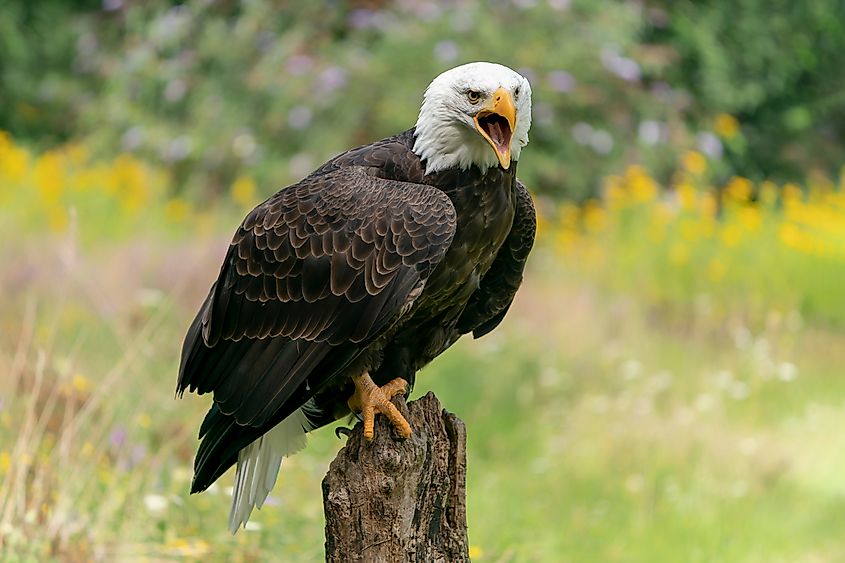
The bald eagle is one of the largest birds of prey in North America, with mature individuals standing at two feet tall and weighing between 6 and 14 pounds. They have wings spanning up to seven feet, and can fly as high as 20,000 feet, and easily carry around half their body weight. Females are around 25% larger than males. Bald eagles are carnivores and will eat fish, other birds, mammals, snakes, and turtles that they hunt, steal, or find dead.
These majestic raptors are typically found in North America, particularly around waterbodies such as rivers and oceans, where they can easily swoop down and catch fish with talons that can grow up to two inches. They also require large and tall trees with thick canopies to be near the open waters for perching, roosting, and nesting. Alaska is home to the largest population of bald eagles in the US, with an estimated 30,000 individuals. Other states, such as Minnesota, Florida, and Wisconsin, have significant populations of bald eagles as well.
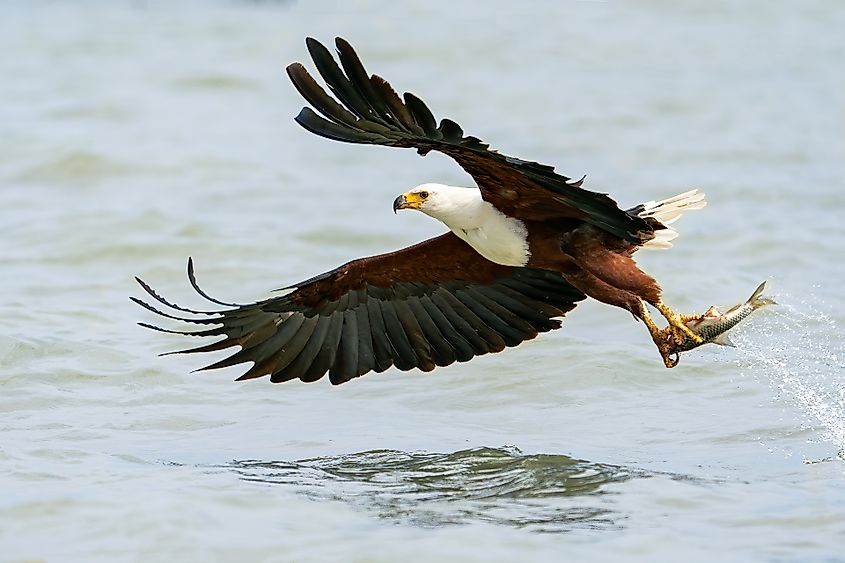
Bald eagles live up to 20 years in the wild on average and even more under human care. Sexual maturity occurs between four and five, during which the beak and eyes turn yellow, and the head and tail feathers turn white. Most bald eagles will set out in search of mates around this age, and usually stick to one partner for life. Their breeding season lasts between late October and February, during which they mate and lay one to three eggs about five to ten days later.
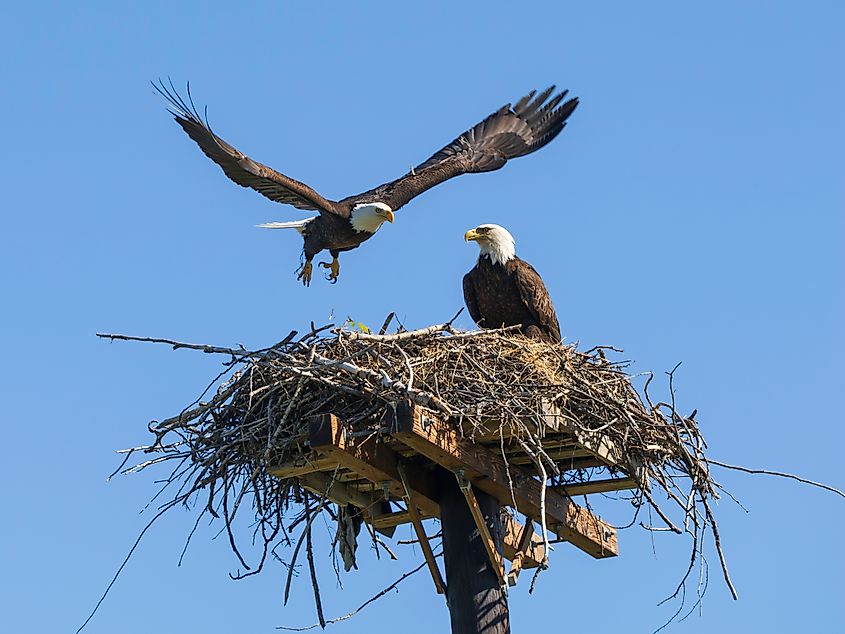
During incubation, both parents take turns in hunting, although males hunt the most, while females do more of the incubation. The incubation period lasts for around 35 days, after which chicks are hatched, then taken care of until they have fledged and are able to fly at about 12 weeks. Generally, the nesting period lasts through April, and chicks typically leave the nest by late July.
History, Near Extinction, And Restoration Of Bald Eagles

As far back as 1782, when the American Revolutionary War was nearing its end, the US adopted the bald eagle as its national emblem, and it appeared on the Great Seal of the US.
It is estimated that bald eagles numbered around 100,000 at the time. However, the numbers declined dramatically due to human activities, persecution, and other factors. While thousands died at the hands of bounty hunters, others died from exposure to DDT insecticide. DDT toxicity in bald eagles led to the thinning of the eggshells of these birds, which ended in reproductive failure.
By 1940, the US government enacted the Bald Eagle Protection Act, which criminalized the killing and distribution of these eagles. Unfortunately, the law was not enough to recover the populations of these birds, and in the 1960s, the bald eagle population in the contiguous US was at an all-time low of around 400 nesting pairs. With hunting going down, DDT became the main culprit, leading to high chick mortality rates in this bird. Finally, with the banning of DDT use in 1972 and the designation of the bald eagle as an endangered species in 1978, the bald eagle numbers gradually started increasing.
Like most of the country, bald eagles also suffered an extreme decline in population in New York. By 1976, only one pair of bald eagles was reported to nest in the state as the effects of DDT lingered on in the bodies of the adult birds for some time despite the ban. Restoration efforts kicked in the same year, focusing on obtaining juveniles from other states where populations were stable, raising them in captivity, and releasing them in the wild to breed in the state. Also, the only nesting pair was monitored and manipulated to bring up captive-bred chicks by implanting these chicks in place of their own eggs with fragile shells.
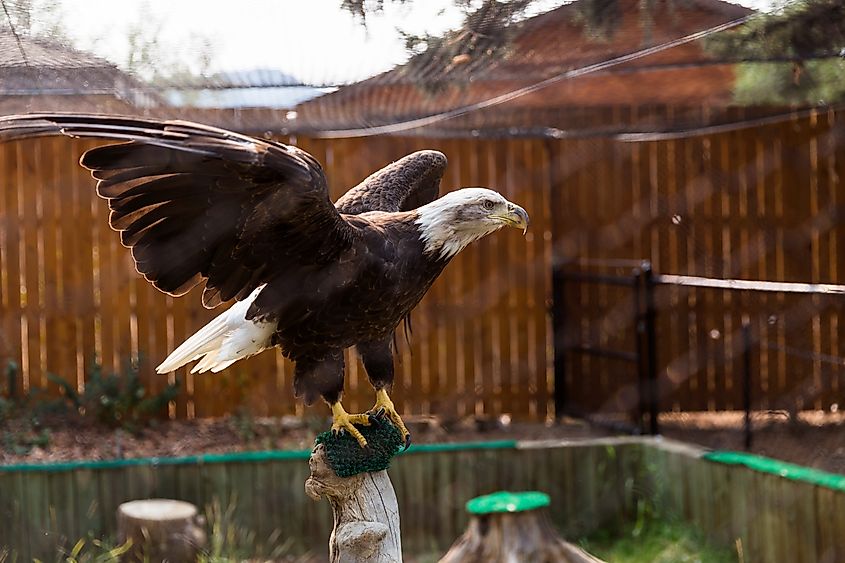
The restoration program by New York’s Department of Environmental Conservation ended in 1989, and by 2017, there were around 323 nesting pairs in New York State, according to the DEC. A few years prior, in 2007, the bald eagle was removed from the list of endangered and threatened species. Today, according to the American Eagle Foundation, the bald eagle population in the country has exploded to an estimated 316,7000 individuals, including 71,400 nesting pairs.
Bald Eagles in New York
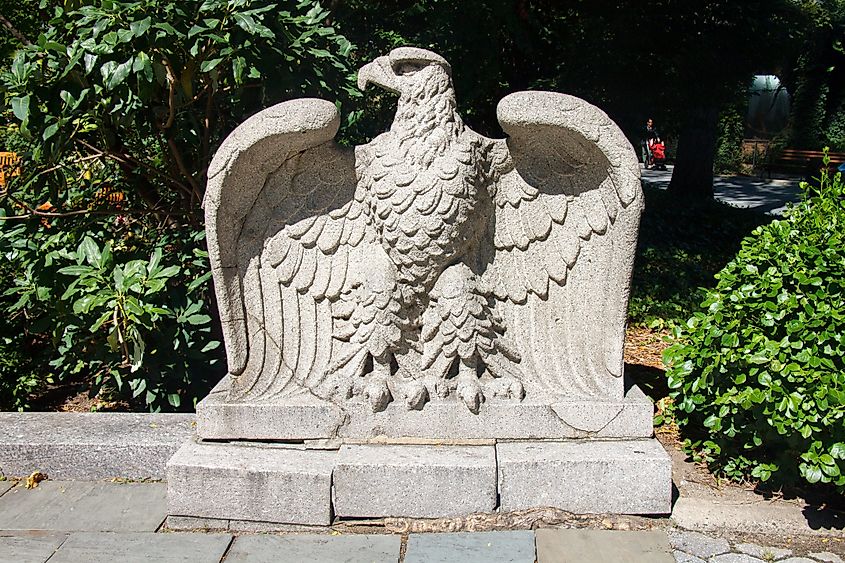
New York State’s bald eagle population was one of the hardest hit in the country. However, after nearly going extinct in the state in the 1970s, the bald eagle population is now thriving there, with the Hudson Valley being one of their most important habitats. The region offers an ideal environment for the majestic raptors, with its abundant rivers, lakes, and forests. The Hudson River itself, which flows for 315 miles, provides a rich supply of fish, the eagles’ primary food source, along with plenty of tall trees for nesting. Notably, the lower Hudson River is where a nesting pair produced the first eagle in 1997, after over 100 years.

Over the years, the river has grown popular among bald eagles, and today, several parks along this water provide the best eagle-watching opportunities in New York. The Norrie Point State Park is at the top of the list of these parks, where one can catch sight of bald eagles. This park is located in the town of Hyde Park and has trails, cabins, dozens of tent sites, and river access.
The George’s Island Park in Montrose is another hot spot in the Hudson Valley to watch bald eagles, especially in winter. This nearly 208-acre park is right on the Hudson River and has picnic areas, where one can sit and look out for the raptors and other birds. The park also offers opportunities for boating, hiking, and fishing.
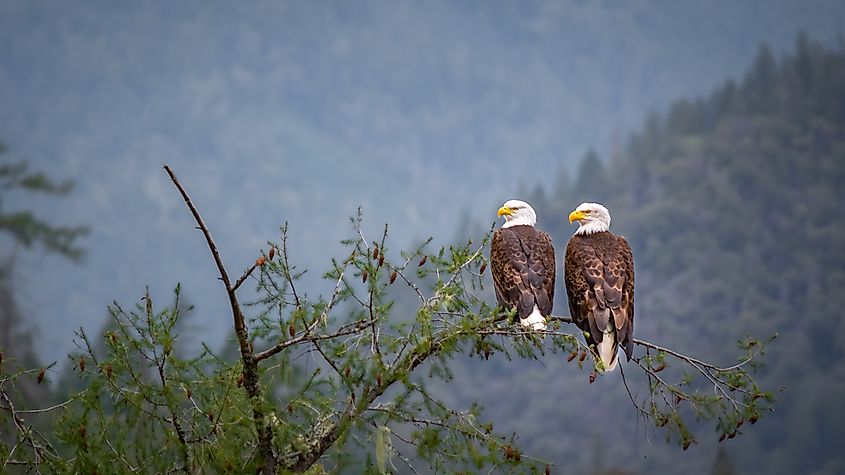
Bald eagles are some of the finest creatures in the US, inspiring the country for hundreds of years. In New York, these creatures are highly esteemed, as they have made a fascinating comeback from near extinction. Today, the Hudson Valley is one of their favorite places to live, nest, and feed year-round. However, bald eagles are also concentrated in other parts of New York, including the Upper Delaware River, the Saint Lawrence River, and the Sacandaga River. The best time to see bald eagles in the state is during winter, typically around early November, which is the start of the nesting season. The population reaches its peak in February.
